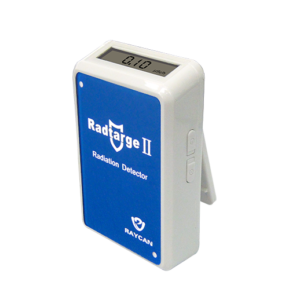In a study sponsored by the North Texas Veterans Healthcare System, researchers found that medical workers significantly reduced their radiation exposure while administering cardiac catheterizations, a type of procedure that often involves X-rays or fluoroscopy, when a real-time radiation monitoring device with auditory feedback was used.
Of the 505 patients who participated in the clinical study, half were randomly assigned to wear a device that beeped with increasing frequency—varying between once every 15 minutes, once every 20 seconds, and continuously—depending on the level of radiation it detected, while the other half went without the device. Medical workers in both groups wore a silent radiation monitoring device to record their dosage. Although the patients unfortunately did not see a difference in wearing the audible device, medical workers in the group that wore the device decreased their radiation exposure by a third.
As chronic radiation exposure in cardiac catheterization labs has been found to increase the chance of developing brain tumors, the results of this study reveal a welcome line of defense in reducing the risks of radiation for personnel.
 X-Z LAB emphasizes that safety follows awareness. RadTarge II | Electronic Personal Dosimeter is designed with that specifically in mind. With auditory, visual, and tactile alert options, a customizable alarm threshold, excellent energy and measurement ranges, as well as an incredibly fast alarm response time of less than 2 seconds, RadTarge II complements the traditional dosimetry methods of rings and badges. Real-time feedback allows users to always be aware of what their exposure is and take appropriate action immediately when exposure becomes too high.
X-Z LAB emphasizes that safety follows awareness. RadTarge II | Electronic Personal Dosimeter is designed with that specifically in mind. With auditory, visual, and tactile alert options, a customizable alarm threshold, excellent energy and measurement ranges, as well as an incredibly fast alarm response time of less than 2 seconds, RadTarge II complements the traditional dosimetry methods of rings and badges. Real-time feedback allows users to always be aware of what their exposure is and take appropriate action immediately when exposure becomes too high.
Abstract
Background:
The Radiation Reduction During Cardiac Catheterization Using Real-Time Monitoring study sought to examine the effect of a radiation detection device that provides real-time operator dose reporting through auditory feedback (Bleeper Sv; Vertec Scientific Ltd; Berkshire, UK) on patient dose and operator exposure during cardiac catheterization.
Methods and Results:
Between January 2012 and May 2014, 505 patients undergoing coronary angiography, percutaneous coronary intervention, or both were randomized to use (n=253) or no use (n=252) of the Bleeper Sv radiation monitor. Operator radiation exposure was measured in both groups using a second, silent radiation exposure monitoring device. Mean patient age was 65±8 years, most patients (99%) were men, and 30% had prior coronary artery bypass graft surgery. Baseline clinical characteristics were similar in the 2 study groups. Radial access was used in 18% and chronic total occlusion percutaneous coronary intervention constituted 7% of the total procedures. Median procedure time was 17 (12–27) minutes for diagnostic angiography, 42 (28–70) minutes for percutaneous coronary intervention, and 27 (14–51) minutes in the overall study population, with similar distribution between the study groups. First (9 [4–17] versus 14 [7–25] μSv; P<0.001) and second (5 [2–10] versus 7 [4–14] μSv; P<0.001) operator radiation exposure was significantly lower in the Bleeper Sv group. Use of the device did not result in a significant reduction in patient radiation dose. The effect of the Bleeper Sv device on operator radiation exposure was consistent among various study subgroups.
Conclusions:
Use of a real-time radiation monitoring device that provides auditory feedback can significantly reduce operator radiation exposure during cardiac catheterization.
Document Credits
Georgios Christopoulos, MD1, Aristotelis C. Papayannis, MD1, Mohammed Alomar, MD1, Anna Kotsia, MD1, Tesfaldet T. Michael, MD1, Bavana V. Rangan, BDS, MPH1, Michele Roesle, RN, BSN1, Deborah Shorrock1, Lorenza Makke, RCIS1, Ronald Layne, BS1, Rebecca Grabarkewitz, BS1, Donald Haagen, RCIS1, Spyros Maragkoudakis, MD2, Atif Mohammad, MD1, Karan Sarode, MA1, Daisha J. Cipher, PhD3, Charles E. Chambers, MD4, Subhash Banerjee, MD1 and Emmanouil S. Brilakis, MD, PhD1
1Department of Cardiovascular Diseases, VA North Texas Healthcare System and University of Texas Southwestern Medical Center, Dallas, TX
2University of Heraklion, Heraklion, Greece
3Department of Biostatistics, College of Health Innovation, University of Texas at Arlington, Arlington, TX
4Department of Cardiology, Penn State Hershey Medical Center, Hershey, PA
Georgios Christopoulos, Aristotelis C. Papayannis, Mohammed Alomar, Anna Kotsia, Tesfaldet T. Michael, Bavana V. Rangan, Michele Roesle, Deborah Shorrock, Lorenza Makke, Ronald Layne, Rebecca Grabarkewitz, Donald Haagen, Spyros Maragkoudakis, Atif Mohammad, Karen Sarode, Daisha J. Cipher, Charles E. Chambers, Subhash Banerjee, and Emmanouil S. Brilakis. “Effect of a Real-Time Radiation Monitoring Device on Operator Radiation Exposure During Cardiac Catheterization: The Radiation Reduction During Cardiac Catheterization Using Real-Time Monitoring Study.” Circulation: Cardiovascular Interventions 7, no. 6 (2014): 744. doi: 10.1161/circinterventions.114.001974
